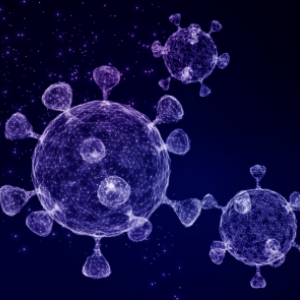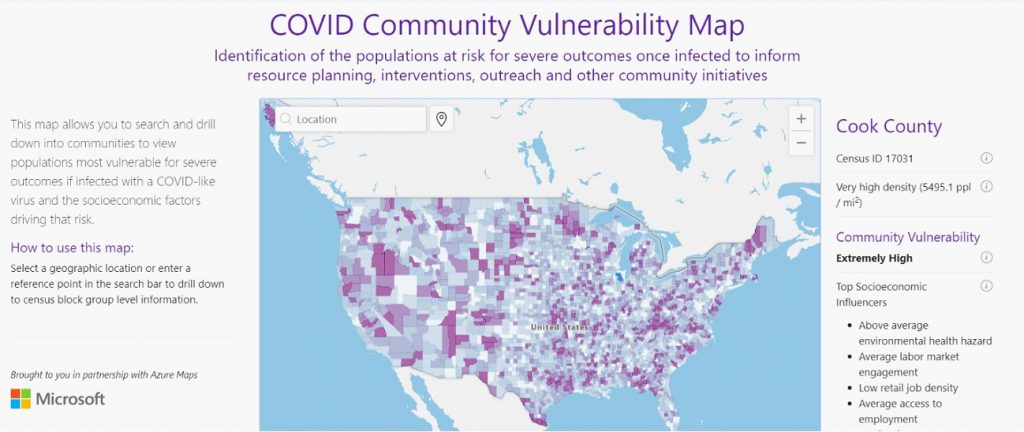
COVID-19! Even the word sounds repulsive. This horrendous disease has killed over 100,000 people in the past 6 months and devastated billions in its wake. However, for the first time in history, we have tools like artificial intelligence (AI) to help us fight a global pandemic.
AI may prove to be one of the best weapons we have to save us from the coronavirus. Below, we share how the advancements in artificial intelligence over the past decade have set the stage for an epic battle between COVID-19 and AI, one we are confident AI solutions will help us win.
AI Will Save Us From Coronavirus
Tracking and Predicting Outbreaks
Before the Centers for Disease Control and Prevention (CDC) and the World Health Organization (WHO) issued public warnings about COVID-19, there was a warning from a small Canadian startup, BlueDot. They reported the issue after their Insights Platform discovered a pattern for the infectious disease outbreak.
They were not the only ones who have helped the public fight this disease. For example, Jvion’s COVID Community Vulnerability Map helped local authorities and healthcare institutions evaluate the risks to a community based on demographic and social risk factors. The data is so precise you can get the information down to a few blocks’ radius of your location.
Private organizations are not the only ones using AI to contribute to solving the COVID-19 disaster. Universities like the Harvard Medical School are using natural language processing (NLP) tools to study online posts about the coronavirus and their current location to track the spread.
NLP helps researchers sort social media coronavirus discussions on whether they are discussing symptoms or sharing news about the disease. This helps researchers identify hot spots and create potential solutions.
Finally, WHO and China released a report last month that announced that they have fed large amounts of data into an AI software program that checks the spread of the disease through contact tracing.
The combination of private and public resources has helped researchers track the spread of this disease faster than any humans could in such a short time frame.
Hospital Resources
In addition to analyzing the risk of getting COVID-19, area hospitals have turned to AI to manage patient demand in areas predicted to run out of hospital supplies.
The data can determine the best way for hospitals to help the highest number of patients in a crisis. For example, using the data, AI can predict which patients should go home or which patients may not survive despite the amount of care they receive. By knowing this information, doctors can focus on helping the greatest number of patients.
While the situation appears grim, doctors are facing a difficult decision. Any aid and support they can receive in administering the best care to patients is beneficial. Also, it removes the burden of them not treating a patient which could have psychological effects after the pandemic ends.
COVID-19 Testing
The first step in saving people is finding out who has the disease. AI has played a key role in getting some of the first tests out to the market.
For example, Chinese tech giant Alibaba has an AI system that detects coronavirus based on chest scans. The tool has an accuracy of 96% because the technology relies on data taken from over 5,000 coronavirus cases.
Additionally, the test is now completed within 20 seconds instead of 15 minutes before producing a positive or negative result. Other improvements to the test include determining whether a patient has the novel coronavirus or pneumonia. Because of the increased accuracy, doctors can scan more patients.
Drug Discovery
Over the past 8 years, start-ups have received $5.2 billion to fund AI tools in the healthcare industry. Most of these investments focused on drug design and discovery. Healthcare AI companies focused on creating information engines that help drug manufacturers improve their drug discovery and clinical trial processes.
For example, BenevolentAI designed an AI system to create the most effective treatments for viruses like COVID-19. Shortly after the outbreak, Benevolent AI algorithms used predictive capabilities to propose existing drugs that might stop or slow the spread of the coronavirus.
Several larger tech giants have investigated drug development as well such as Google’s DeepMind whose algorithms help researchers understand the different proteins that form the structure of the virus. They published these findings, so scientists around the world can access additional data to find a cure.
Without this data, it would’ve taken a much longer time for scientists to this on their own.
Locating Infected or Non-compliant Individuals
Given the privacy discussions from the past few years, this technology might be a non-starter in the US. However, some countries like China have already used AI to identify sick individuals and those who have violated quarantine orders.
For example, China uses a tool called SenseTime to measure individuals’ temperature to determine if they have a fever as those with a fever are more likely to be infected. The tool also relies on facial recognition technology to track people who should not be traveling because of the infection.
Given the lack of privacy this tool offers, many of benefits offered would not be available in the US. For example, the Health Code system in China assigns citizens different color codes (red, yellow, or green) based on their travel history, location near hotspots, and potential exposure.
Popular apps like WeChat and Alipay also tell people whether they must abide by the full quarantine or be out in public.
Final Thoughts
With close to 2 million reported cases of COVID-19 globally, it is important to know that we must use every resource to fight this insidious disease. AI is one resource public health officials cannot discount.
Let us know in the comments below what AI tool you think will have the greatest effect in saving lives fighting the coronavirus.

